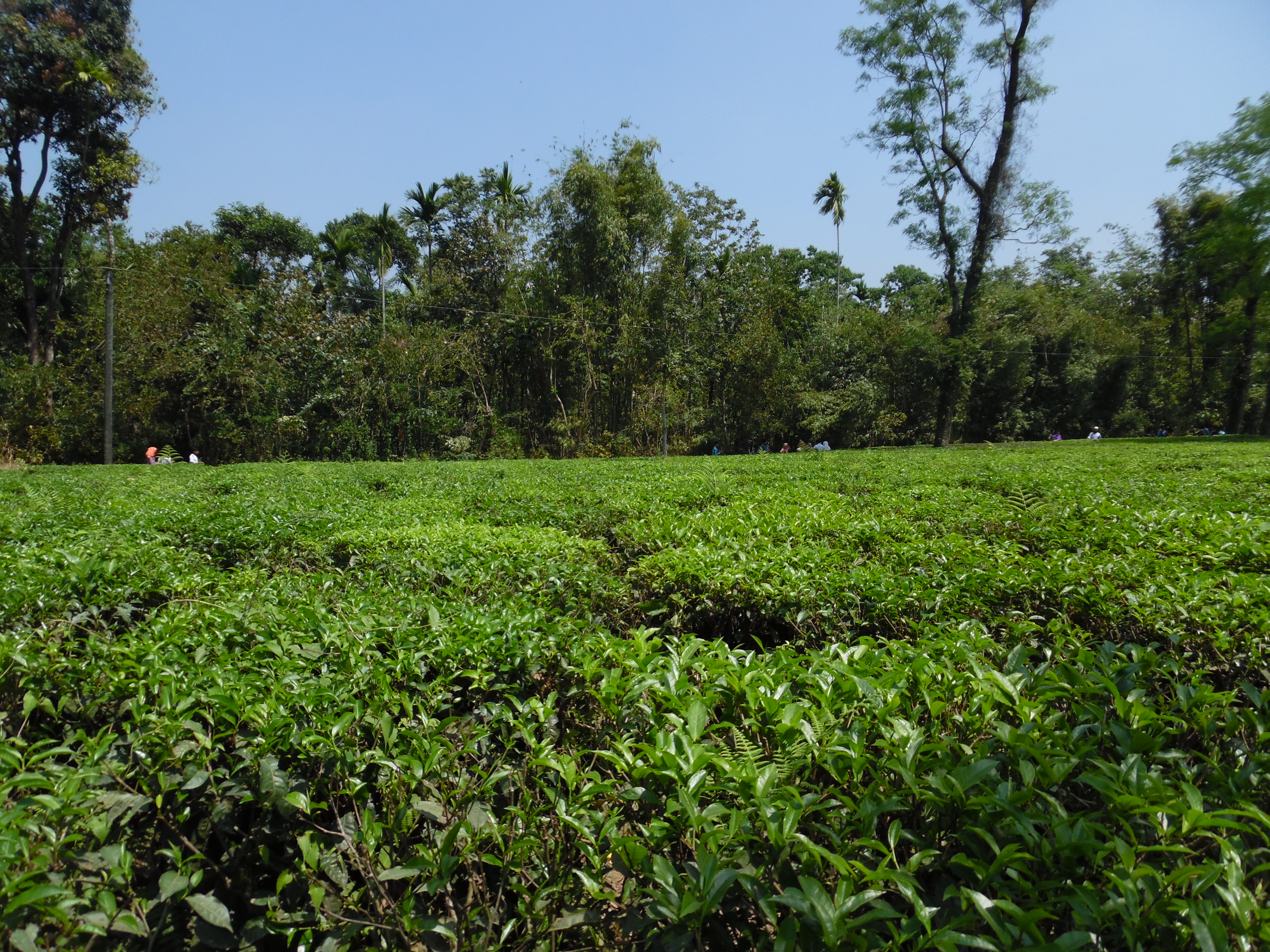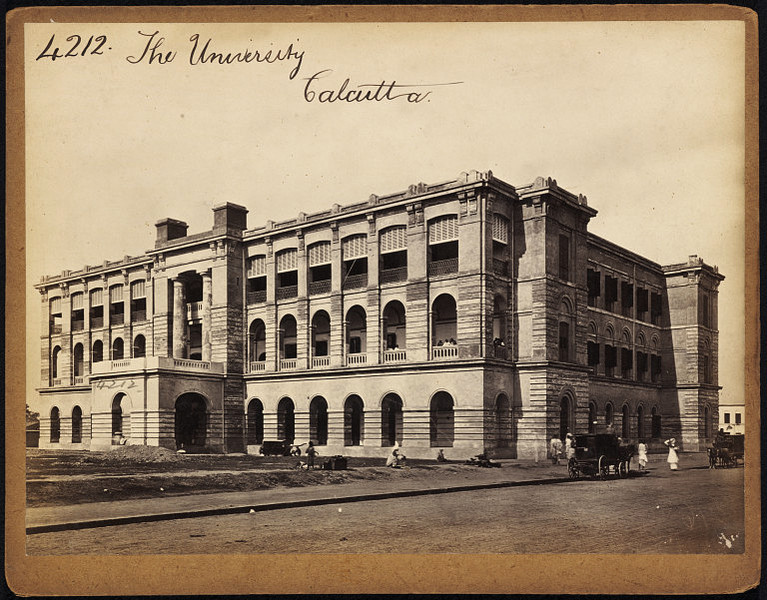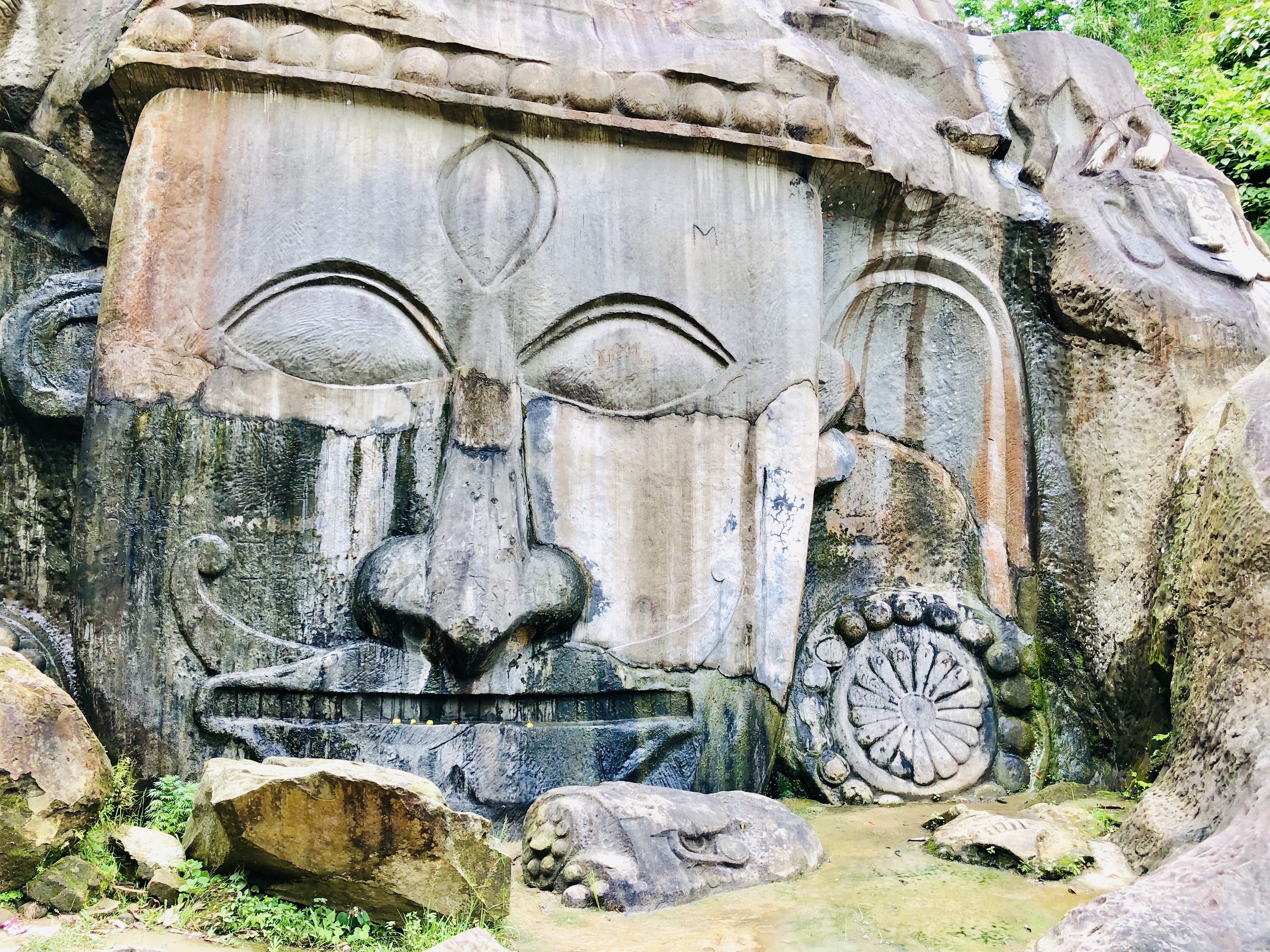|
Sylhet Gitika
''Sylhet Gitika'' () is the folklore of Sylhet region including the oral narrative poetry, stories, fables, etc. The source of ''Sylhet Gitika'' is considered to be the daily lifestyle of the ancient people of Sylhet region, the livelihood of the indigenous people, feudal system of governance, rural folklore, emotional feelings, love-separation, war and humanity. According to the list given by Professor Asaddor Ali, 120 folk tales have been included in the ''Sylhet Gitika''. The lyric poems collected by Chandra Kumar De from Mymensingh, Netrokona, Sylhet, Faridpur, Dhaka, Noakhali and Tripura with the efforts of Dr. Dinesh Chandra Sen, Ashutosh Chaudhury and many others were published gradually from Calcutta University as ''Purbabanga Gitika'' and '' Maimansingha Gitika''. Besides, Chowdhury Gulam Akbar selected 10 lyric poems from Bangla Academy in 1986 and published them together as ''Sylhet Gitika''. Lyrics included in the ''Sylhet Gitika'' See also * Bangladeshi fol ... [...More Info...] [...Related Items...] OR: [Wikipedia] [Google] [Baidu] |
Sylhet
Sylhet (; ) is a Metropolis, metropolitan city in the north eastern region of Bangladesh. It serves as the administrative center for both the Sylhet District and the Sylhet Division. The city is situated on the banks of the Surma River and, as of 2025, the metro area population of Sylhet is estimated to be 1,033,000, reflecting a 3.4% increase from 2024. Making it third-largest urban area. Sylhet is known for its tea plantations and natural scenery. The region has been inhabited since ancient times, and since the city's establishment in the 14th century has been ruled by various dynasties including the Mughals, the British Empire, British, and the Nawabs of Bengal. The city is also home to several important landmarks, such as one of the Islamic sites in Bangladesh, the Shah Jalal Dargah, which attracts thousands of pilgrims annually. Sylhet is also the first city in the country to have a road with no overhead cable. Sylhet is one of the most economically important cities in Bang ... [...More Info...] [...Related Items...] OR: [Wikipedia] [Google] [Baidu] |
Dinesh Chandra Sen
Rai Bahadur Dinesh Chandra Sen () (3 November 1866 – 20 November 1939)Sengupta, Subodh Chandra (ed.) (1988) ''Sansad Bangali Charitabhidhan'' (in Bengali), Kolkata: Sahitya Sansad, p.208 was a Bengali writer, educationist and researcher of Bengali folklore from the Indian subcontinent. He was the founding faculty member and the Ramtanu Lahiri Research Fellow of the Department of Bengali Language and Literature of the University of Calcutta. He died in Calcutta in 1939. Early life and family Sen was born to Ishwar Chandra Sen and Rupalata Devi, in the village of Suapur (in present-day Dhaka District, Bangladesh). His mother's family was from ''Bogjuri'' in Manikganj District. Hiralal Sen was a cousin on that side. His grandson Samar Sen was a noted Bengali poet. Education and career In 1882, he passed his university entrance examination from Jagannath College in Dhaka. In 1885, he passed his F.A. examination from Dhaka College. He passed his B.A. examination with Honours ... [...More Info...] [...Related Items...] OR: [Wikipedia] [Google] [Baidu] |
Sylheti Language
Sylheti (Sylheti Nagri: , ''síloṭi'', ; , ''sileṭi'', ) is an Indo-Aryan languages, Indo-Aryan language spoken by an estimated 11 million people, primarily in the Sylhet Division of Bangladesh, Barak Valley of Assam, and northern parts of Tripura in India."Sylheti is an Indo-Aryan language spoken by about 11 million people in India and Bangladesh (Hammarström et al., 2017). Sylheti is an Eastern Indo-Aryan language, primarily spoken in the Sylhet division of Bangladesh, and in Barak valley, in Assam of the India and in the northern parts of the state of Tripura in India." Besides, there are substantial numbers of Sylheti speakers in the Indian states of Meghalaya, Manipur, and Nagaland as well as diaspora communities in the United Kingdom, the United States, Canada and the Middle East. It is variously perceived as either a Bengali dialects, dialect of Bengali or a language in its own right. While most linguists consider it an independent language,"Along the linguistic co ... [...More Info...] [...Related Items...] OR: [Wikipedia] [Google] [Baidu] |
Bengali Literature
Bengali literature () denotes the body of writings in the Bengali language and which covers Old Bengali, Middle Bengali and Modern Bengali with the changes through the passage of time and dynastic patronization or non-patronization. Bengali has developed over the course of roughly 1,400 years. If the emergence of the Bengali literature supposes to date back to roughly 650 AD, the development of Bengali literature claims to be 1600 years old. The earliest extant work in Bengali literature is the ''Charyapada'', a collection of Buddhist mystic songs in Old Bengali dating back to the 10th and 11th centuries. The timeline of Bengali literature is divided into three periods: ancient (650–1200), medieval (1200–1800) and modern (after 1800). Medieval Bengali literature consists of various poetic genres, including Hindu religious scriptures (e.g. Mangalkavya), Islamic epics (e.g. works of Syed Sultan and Abdul Hakim (poet), Abdul Hakim), Vaishnava texts (e.g. biographies of Chaitan ... [...More Info...] [...Related Items...] OR: [Wikipedia] [Google] [Baidu] |
Bangladeshi Folk Literature
Bangladeshi Folk Literature () constitutes a considerable portion of Bengali literature. Though it was created by illiterate communities and passed down orally from one generation to another it tends to flourish Bengali literature. Individual folk literature became a collective product and assumes the traditions, emotions, thoughts and values of the community. History From the third century onwards, the Mouryas, the Guptas, the Palas, the Senas and the Muslims came one after another to rule the land. As a result, they grafted their ways of life and cultural traits on the indigenous population. Subsequently, Portuguese, French and English ships anchored in the harbors of Bengal. They left not only their merchandise but also their customs. Each race left its own mark and it was not only physical but also cultural, which collectively formed the basis of the culture. Oral literature and its influence Because folk literature is oral, it tends to rely on some mnemonic devices and pat ... [...More Info...] [...Related Items...] OR: [Wikipedia] [Google] [Baidu] |
Bangla Academy
The Bangla Academy (, ) is the official regulatory body of the Bengali language in Bangladesh. It is an autonomous institution funded by the Government of Bangladesh that fosters the Bengali language, literature and culture, works to develop and implement national language policy and conducts original research in Bengali. Established in 1955, it is located in the Burdwan House in Shahbagh, Dhaka, on the grounds of the University of Dhaka and Suhrawardy Udyan. The Bangla Academy hosts the annual Ekushey Book Fair. History The importance of establishing an organisation for Bengali language was first emphasised by the linguist Muhammad Shahidullah. Later, following the Language movement, on 27 April 1952, the All Party National Language Committee decided to demand the establishment of an organisation for the promotion of Bengali language. During the 1954 parliamentary elections, the United Front's 21-point manifesto stated that, "The prime minister from the United Front will ... [...More Info...] [...Related Items...] OR: [Wikipedia] [Google] [Baidu] |
Chowdhury Gulam Akbar
Chowdhury Gulam Akbar (; 16 September 1921 – 29 December 1988) was a Bangladeshi writer. He served in the Bangla Academy of Bangladesh as the collector of Bengali folk literature. Early life Gulam Akbar was born on 16 September 1921 in Dargahpur village of Maulvi Bazar District (now Kamalganj Upazila, Moulvibazar District, Bangladesh). He passed the Middle English Examination in 1936. After passing the M.E Examination, he sat for a competitive examination and became a primary school teacher in 1942. Became a teacher he passed Guru training examination in 1952. As a private candidate he passed the Matriculation examination in 1954. After built the teaching career of 25 years, he resigned in 1967. He died in Maulvi Bazar on 29 December 1988. Writing career Gulam Akbar had a special fascination for folk literature. After retirement, he was appointed as collector of folk literature by Bangla Academy. He toured the Sylhet region and collected a large number of ballads and s ... [...More Info...] [...Related Items...] OR: [Wikipedia] [Google] [Baidu] |
Maimansingha Gitika
''Maimansingha Gitika'' () is a collection of Bengali folk ballads from the region of Eastern Mymensingh (now Netrokona) Bangladesh. They were published in English as ''Eastern Bengal Ballads''. Dinesh Chandra Sen collected the songs, and Dinesh Chandra Sen was the editor; the collection was published by the University of Calcutta, along with another similar publication named ''Purbabanga-gitika''. Historical and Geographical Context Geographic ''Maimansingha Gitika'' was first introduced to the world by Dineschandra Sen, a professor at Calcutta University, in 1923.Zbavitel, D. (1963). ''Bengali Folk-Ballads from Mymensingh and the Problem of Their Authenticity''. Calcutta: University of Calcutta, p. v. The songs in this collection mostly focus on stories from the Mymensingh District and nearby areas, which is regarded as one of the richest regions in Bengali folk culture.Salman, M. A. N. (2014). ''Folklore Academy'' (Unpublished bachelor’s thesis). BRAC University, Ba ... [...More Info...] [...Related Items...] OR: [Wikipedia] [Google] [Baidu] |
Calcutta University
The University of Calcutta, informally known as Calcutta University (), is a Public university, public State university (India), state university located in Kolkata, Calcutta (Kolkata), West Bengal, India. It has 151 affiliated undergraduate colleges and 16 institutes in Kolkata and nearby areas. It was established on 24 January 1857 and is the oldest multidisciplinary university of Indian Subcontinent and Southeast Asian Region. Today, the university's jurisdiction is limited to a few districts of West Bengal, but at the time of its establishment it had a catchment area ranging from Kabul to Myanmar. It is accredited as an "A" grade university by the National Assessment and Accreditation Council (NAAC). The university has a total of fourteen campuses spread over the city of Kolkata and its suburbs. As of 2020, 151 colleges and 21 institutes and centres are affiliated with CU. The university was fourth in the Indian University Ranking 2021 list, released by the National Institu ... [...More Info...] [...Related Items...] OR: [Wikipedia] [Google] [Baidu] |
Tripura
Tripura () is a States and union territories of India, state in northeastern India. The List of states and union territories of India by area, third-smallest state in the country, it covers ; and the seventh-least populous state with a population of 3.67 million. It is bordered by Assam and Mizoram to the east and by Bangladesh to the north, south and west. Tripura is divided into List of districts of Tripura, 8 districts and 23 sub-divisions, where Agartala is the capital and the largest city in the state. Tripura has 19 different tribal communities with a majority Bengalis, Bengali population. Bengali language, Bengali, Indian English, English and Kokborok are the state's official languages. The area of modern Tripura — ruled for several centuries by the Manikya Dynasty — was part of the Tripuri Kingdom (also known as Hill Tippera). It became a princely state under the British Raj during its tenure, and acceded to independent India in 1947. It merged with India in 1949 an ... [...More Info...] [...Related Items...] OR: [Wikipedia] [Google] [Baidu] |
Sylhet Region
Sylhet Division () is a northeastern Divisions of Bangladesh, division of Bangladesh, renowned for its lush tea gardens, rolling hills and vibrant cultural heritage. Covering an area of approximately 12,298 square kilometres, it is bordered by the States and union territories of India, Indian states of Meghalaya, Assam and Tripura to the north, east and south respectively, while domestically it adjoins Chittagong Division, Chattogram to the southwest and Dhaka Division, Dhaka and Mymensingh Division, Mymensingh to the west. Prior to Partition of India, Partition in 1947, it included Karimganj district, Karimganj subdivision (presently in Barak Valley, Assam, India). However, Karimganj (including the thanas of Badarpur, Assam, Badarpur, Patharkandi and Ratabari Assembly constituency, Ratabari) was inexplicably severed from Sylhet by the Radcliffe Line, Radcliffe Boundary Commission. According to Niharranjan Ray, it was partly due to a plea from a delegation led by Abdul Matlib Ma ... [...More Info...] [...Related Items...] OR: [Wikipedia] [Google] [Baidu] |
Noakhali
Noakhali District (), historically known as Bhulua (), is a Districts of Bangladesh, district in southeastern Bangladesh, located in Chattogram Division. It was established as a district in 1821, and officially named Noakhali in 1868. The district's administrative center is situated in Noakhali municipality, also referred to as Maijdee, within Noakhali Sadar Upazila. Notably, Noakhali is the only district in Bangladesh whose capital city does not share the district's name. Etymology and names The name of Noakhali District comes from the town of Noakhali (নোয়াখালী), which was the former headquarters of the old district. It is a compound word, compound of two words; ''Noa'' (meaning new in Bengali language, Bengali) and ''Khali'' (a diminutive of Bengali word ''khal'' meaning canal). The history behind its naming is traced back to a canal that was dug in the 1660s in response to devastating floods which had affected the area's agricultural activities. The canal ... [...More Info...] [...Related Items...] OR: [Wikipedia] [Google] [Baidu] |





